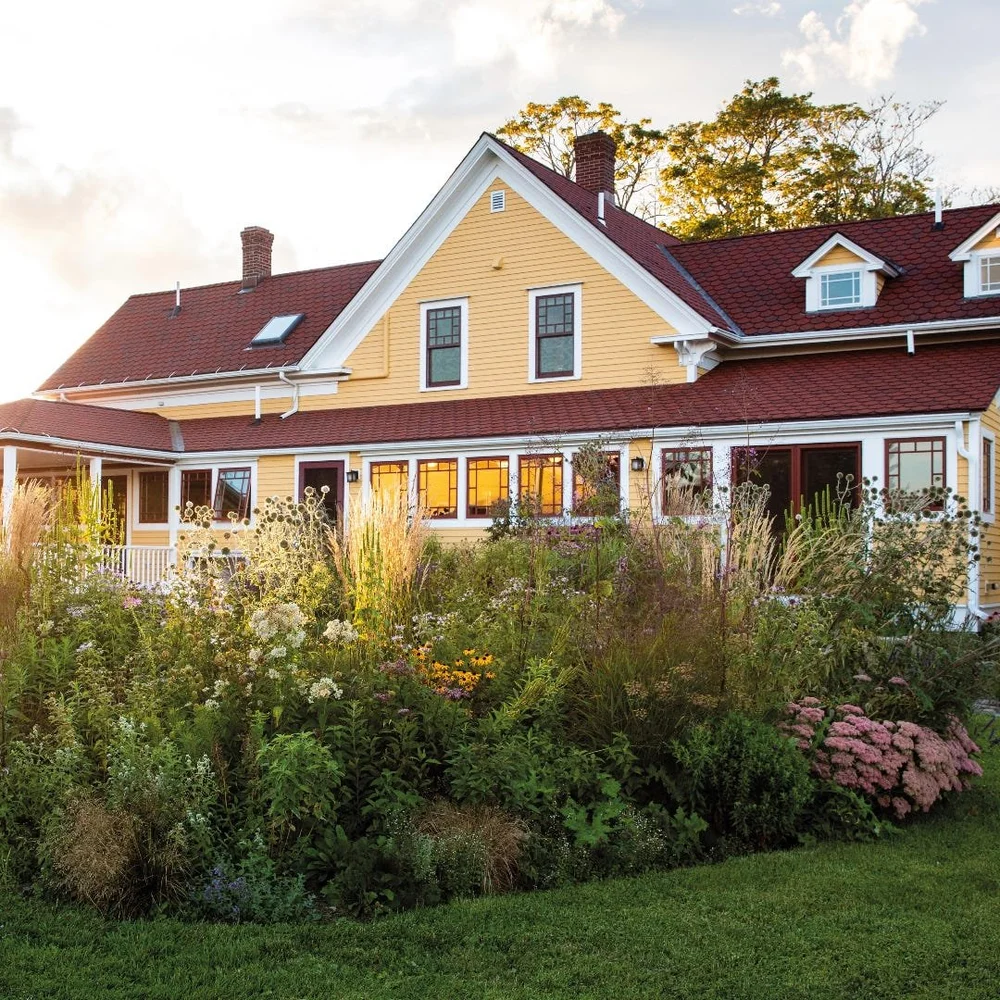Plus, the latest, scary research on glyphosate, the active ingredient in Roundup

Gravel path in Florida garden (photo: Tom Hewitt)
Dear Avant Gardener, Something I want to see more discussion of and understand are principles of succession of vegetation in the disturbed landscape. I fail to believe or understand how going right to 'rip it out', 'kill it' behaviors is healthy. There are many reasons certain plants grow where they do. Rumex sp. with taproots are often developing deep soil, add organic matter deep into soil, increase drainage capacity, are beneficial to wildlife, and have medicinal properties. Leave the non-invasives if possible; interplant or seed with something more desirable, manage the competition. — Jeffrey J., Minnesota
Well said! When we rip out benign plants, we often make room for invasives, rather than slower growing natives. In addition, spontaneous early succession plants feed or distract wildlife, enabling slower growing natives to establish. Increasingly, I leave benign volunteers — i.e., weeds — until my planted natives are growing densely, when I have the luxury of removing some to make room for others. At that point, we’re talking about a delicate, aesthetic adjustment.
That said, curly dock (Rumex crispus) and sheep sorrel (Rumex acetosella), common Eurasian Rumex species present in all states, are indeed invasive — to a “limited” or “moderate” extent, respectively, according to the California Invasive Plant Council. And, like some natives, they are considered noxious weeds in some areas because they contain oxalates toxic to livestock. However, these invasive docks are so widespread that allowing them to grow on a specific property while waiting for beneficial natives to establish is unlikely to cause harm, unless it abuts a livestock field.
“Kill it behavior,” on the other hand, may be far more destructive than these minimally invasive plants. The latest research on glyphosate is frightening. See below.
— The Avant Gardener
Dear Avant Gardener, I am interested in affordable, natural looking edging material for my growing native garden. Do you have any recommendations and illustrative examples? — Rebecca, North Florida
Sure, . . . but why? There’s no general reason to put edging material between paths or turf areas and beds of perennials and shrubs. Too often, edging is a kitchy focal point, detracting from the overall effect.
Edges are indeed powerful design elements, as well as “signs of care,” distinguishing gardens from wild places. However, the contrast between the path and the bed is the most powerful edge. There’s often no need to dress up this true edge with “edging.” If you want to emphasize the edge, first consider outlining a bed with a single low-growing plant.
In Florida, inexpensive natural path or patio materials that contrast with native plantings include sand, wood chips, pine straw, crushed shell, limestone pea gravel, and fallen live oak leaves. You can probably source several of these on your own property. If you’re carving new beds for natives out of established turf, then the mown turf will provide adequate contrast without edging.
That said, I can imagine a few reasons for wanting edging between your path and beds:
Your plantings aren’t yet dense enough to look like much. In this case, you can use larger shells, limestone rocks, fallen branches, and even logs to define beds, temporarily or permanently.
You are uncomfortable having pea gravel or crushed shells spread into your beds. Galvanized metal or even resin edging is an inexpensive, almost invisible way to control such borders.
You like a crisp, formal look. Edging a path is much less expensive than hardscaping the path itself. Choose a natural material that complements the architectural style of your home. Inexpensive options include brick for colonial, terracotta for Spanish colonial style, or galvanized steel for modern.
— The Avant Gardener
Why, How, Wow!
Why?
Glyphosate is the most widely used herbicide in the world, used by ecologists to kill invasive plants, as well as by industrial agriculture.
That’s why a study published just last month that proved a link between glyphosate — the active ingredient in Roundup — and epidemic levels of chronic kidney disease is so frightening. Tropical farming communities around the world are suffering; for example, as many as 10 percent of children aged 5 to 11 years old in Sri Lanka exhibit signs of early onset kidney damage.
Because it is supposed to break down in the environment within a few days to weeks, [glyphosate’s] use is relatively under-regulated by most public health agencies. But when glyphosate encounters certain trace metal ions that make water hard — like magnesium and calcium — glyphosate-metal ion complexes can form. Those complexes can persist up to seven years in water and 22 years in soil. — Phys.org
Environmental scientists from Duke compared water from 200 wells from both endemic and non-endemic areas in Sri Lanka to test the hypothesis that glyphosate-metal ion complexes might explain the epidemic levels of kidney disease.
Glyphosate was detected in 44% of endemic wells and 8% of non-endemic wells. . . . Logistic regression revealed that the presence of elevated glyphosate, fluoride, hardness, and vanadium in wells was positively associated with [chronic kidney disease] prevalence. . . . Collectively, our work represents the first definitive assessment of glyphosate presence in regions with geogenic high water hardness and fluoride and demonstrates a strong correlation with [chronic kidney disease] incidence. — Environmental Science and Technology Letters
Yikes!!!

A researcher takes samples of well water in a rural community of Sri Lanka (photo: Jake Ulrich)
How
Big box stores pitch edging as a way to make gardens “neat” and “professional looking.” The latter must refer to mow-and-blow care, because the most esteemed garden designers aren’t going for neatness. They do, however, like contrast. A sunken brick, cobblestone, or flagstone edge is less expensive than a hardscaped path or garden room as a way to introduce contrast, history, and a formal note. In addition, you can mow right over it — saving some of the three hours a month Americans spend edging during the summer, according to a survey sponsored by Cub Cadet, a lawnmower manufacturer.



No edging needed at this Maine garden by Caleb Davis (left), nor at famed Sissinghurst (middle). Sunken brick edging is a less expensive alternative to a brick path. (Photos: Claire Takacs, Andrew Butler, Kolin Smith)
Wow!
Crushed shell, pea gravel, and — if you’re in Florida — sand bring light into a garden, as well as contrasting with plantings. Edging optional.

Sand path provides light and contrast in this beautiful all-green Florida landscape (photo: Gigi Ortwein, Sarasota Magazine)
Related Resources
Want to DIY a sunken brick edge? See how at This Old House.
Interested in crushed shell for your coastal house? Find more ideas at Gardenista.
Hankering for more pics of the Maine native plant garden by Caleb Davis? Check out Gardens Illustrated.
